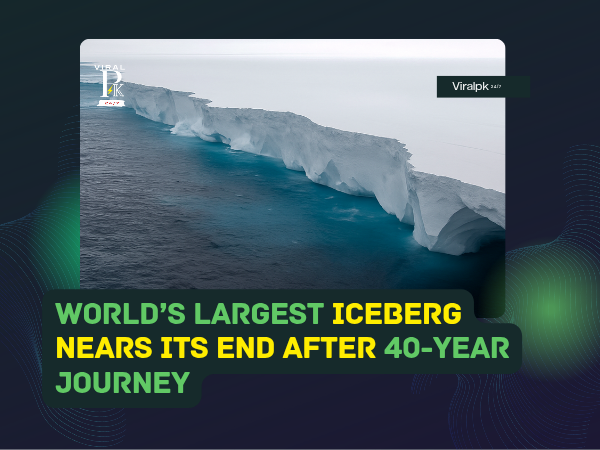Antarctica — The world’s largest and one of the oldest icebergs, A-23A, which broke off from Antarctica in 1986, is finally nearing the end of its journey. After drifting for nearly four decades, the massive iceberg has now reached the warmer waters of the South Atlantic, where it is rapidly melting.
A Gigantic Ice Formation
At its peak, A-23A measured around 1,500 square miles—larger than the size of Karachi (1,360 square miles)—and weighed an estimated 1 trillion tons. For years, it remained grounded in the Weddell Sea before it began to drift in 2020, eventually reaching the vicinity of South Georgia.
Environmental Concerns
The iceberg’s presence near South Georgia raised alarms about the survival of local wildlife, including millions of penguins and seals, whose food supply routes could have been disrupted. However, A-23A eventually continued its drift, rejoining ocean currents.
Breaking Apart
In recent months, the iceberg has started to fracture into massive chunks, some measuring up to 400 square kilometers, posing potential risks to shipping routes. Experts note that these break-offs signal the final stage of the iceberg’s existence.
Scientific Observations
According to Andrew Meijers of the British Antarctic Survey, A-23A is now on its “final journey” and may disappear completely within weeks. He added that it is remarkable how the iceberg managed to maintain its structure and mass for such an unusually long time compared to others.
The gradual melting of A-23A marks the end of a natural phenomenon that has fascinated scientists and the public alike for decades.
📌 Disclaimer: This article is for informational purposes only.
Follow VIRAL PK 24/7 for more updates.
—
🔑 Keywords:
- Antarctica news
- climate change icebergs
- global warming iceberg
- South Georgia wildlife threat
- British Antarctic Survey
- Karachi-sized iceberg
- Antarctic iceberg melting
- world’s largest iceberg 2025
- A-23A iceberg











